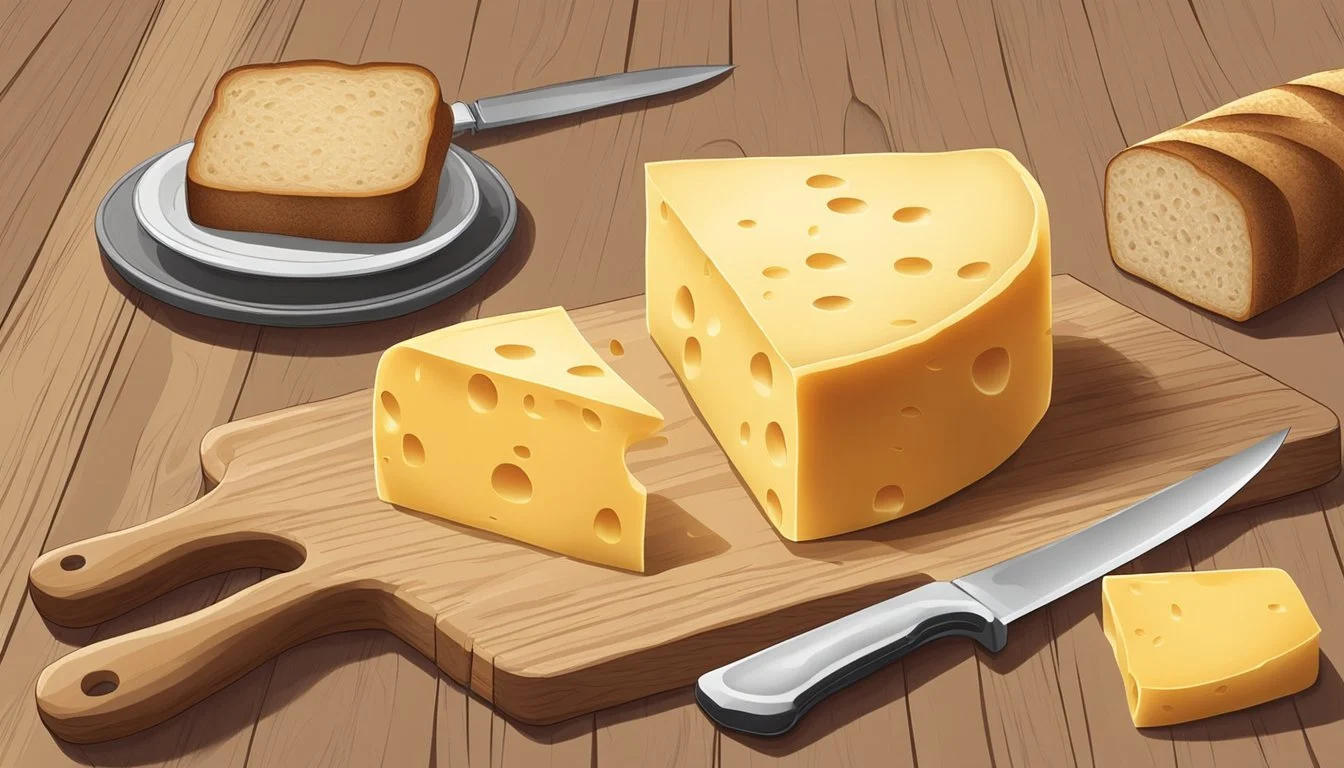Foods High in Bad Cholesterol
Identifying Unhealthy Choices
Understanding which foods are high in bad cholesterol is crucial for managing your health. High levels of low-density lipoprotein (LDL) cholesterol can increase the risk of heart disease and other cardiovascular problems. Identifying these foods and moderating their intake can be vital steps towards a healthier lifestyle.
Bad cholesterol, or LDL, can be found in various common foods that many people consume regularly. Knowing what these foods are can help in making informed dietary choices. This information can empower individuals to avoid excessive intake and potentially reduce the risk of developing significant health issues.
1) Fried Chicken
Fried chicken is a popular dish that can significantly contribute to high cholesterol levels.
When chicken is fried, especially with the skin on, it absorbs a substantial amount of unhealthy fats. These fats mostly include saturated fats and trans fats, which are known for raising LDL (low-density lipoprotein) cholesterol, the harmful type of cholesterol.
Different preparation methods of fried chicken can affect its cholesterol content. For example, chicken fried with batter or flour tends to have higher cholesterol levels compared to grilled or baked chicken. Removing the skin before frying can reduce some fat content, but the frying process itself still adds unhealthy fats.
Regular consumption of fried chicken can lead to a build-up of cholesterol in the arteries. This build-up increases the risk of heart disease and other cardiovascular issues. Reducing the intake of fried chicken and opting for healthier preparation methods like baking or grilling can be beneficial for maintaining healthier cholesterol levels.
2) Bacon
Bacon is a popular breakfast item that many enjoy for its savory and crispy texture. Despite its appealing taste, bacon is high in saturated fats, which can contribute to higher LDL cholesterol levels. Elevated LDL cholesterol is often linked to an increased risk of heart disease.
In addition to its high saturated fat content, bacon also contains a significant amount of sodium. Excessive sodium intake can lead to high blood pressure, which is another risk factor for cardiovascular diseases.
Moreover, bacon is a processed meat, which means it often includes additives and preservatives. Some studies suggest that regular consumption of processed meats may be associated with adverse health effects beyond just cholesterol levels.
Given these factors, it's advisable to consume bacon in moderation. Looking for alternatives or limiting intake can help manage cholesterol and maintain a heart-healthy diet.
3) Cheeseburgers
Cheeseburgers are a popular choice at fast-food restaurants, but they are often packed with ingredients that can raise bad cholesterol levels.
The beef patty in a cheeseburger is typically high in saturated fat. Saturated fats can increase levels of low-density lipoprotein (LDL), commonly known as bad cholesterol.
Additionally, many fast-food cheeseburgers include cheese, which also contains saturated fat. The combination of the beef patty and cheese can contribute to higher cholesterol levels.
Cheeseburgers often come with other toppings such as bacon, which is another source of saturated fat. This further compounds the unhealthy impact on cholesterol levels.
Moreover, the sauces used in cheeseburgers, such as mayonnaise and special sauces, often contain unhealthy fats and added sugars. These can contribute to poor heart health.
Eating cheeseburgers on a regular basis can lead to increased cholesterol levels. Reducing the intake of cheeseburgers and opting for healthier alternatives can help manage cholesterol levels effectively.
4) Sausages
Sausages are often high in cholesterol due to their animal-based ingredients.
These processed meats typically contain substantial amounts of saturated fats, which can elevate levels of LDL cholesterol, commonly referred to as "bad" cholesterol.
Regular consumption of sausages may increase the risk of heart disease.
Ingredients like pork, beef, and various seasonings are commonly used in sausages.
They are often processed with added fats and preservatives, further contributing to their cholesterol content.
For those looking to reduce cholesterol, limiting sausage intake is advisable.
To maintain a healthier diet, consider choosing leaner protein sources over sausages.
5) French Fries
French fries are a popular side dish and snack. They are typically deep-fried in oil, which contributes to their high cholesterol content.
A medium serving of french fries can contain harmful trans fats. These trans fats increase LDL ("bad") cholesterol and decrease HDL ("good") cholesterol.
Regular consumption of french fries may lead to health issues. High intake is linked to increased risks of heart disease and type 2 diabetes due to the trans fats and high sodium levels.
Individuals consuming french fries often might have diets high in other unhealthy foods. This can compound the negative health effects and contribute to obesity and high blood pressure.
6) Ice Cream
Ice cream, a popular treat, is known for its creamy texture and sweet flavors. It's made from full-fat dairy products, which contain significant amounts of saturated fat.
Regularly consuming ice cream can lead to elevated levels of LDL cholesterol. This "bad" cholesterol is linked to heart disease and other cardiovascular issues.
Ultra-processed, ice cream is also high in sugar and calories. These factors can contribute to weight gain and metabolic disorders, further increasing the risk of high cholesterol.
While occasional indulgence might not pose severe health risks, frequent consumption of ice cream should be moderated for those concerned with cholesterol levels.
7) Cream Cheese
Cream cheese is widely used in various dishes, from bagels to cheesecakes.
It is known for its smooth, creamy texture and slightly tangy taste. However, it is also high in saturated fat and cholesterol.
A standard serving of cream cheese contains a significant amount of saturated fat, which can increase LDL (bad) cholesterol levels.
People with high cholesterol should consume cream cheese in moderation and look for lower-fat alternatives if possible.
Options like reduced-fat cream cheese can be considered, though they may have a different taste and texture.
Always check the nutritional label to understand the fat and cholesterol content before including it in your diet.
8) Butter
Butter is known for its high levels of saturated fat. This type of fat can increase low-density lipoprotein (LDL) cholesterol, often referred to as "bad" cholesterol.
A significant portion of the fats in butter is saturated fat. High intake of saturated fats is closely linked to higher LDL levels in the bloodstream.
Regular consumption of butter can contribute to cholesterol-related health issues. For individuals with high cholesterol, it is often recommended to limit intake of butter and similar high-saturated fat foods.
Moderation is crucial when it comes to butter consumption, due to its potential impact on cholesterol levels. Opting for alternative spreads can be a healthier choice for those looking to manage their cholesterol.
9) Pastries
Pastries are commonly high in bad cholesterol due to their ingredients. Many pastries are made using butter, shortening, or lard, all of which are high in saturated fats. Consuming these fats can raise LDL (low-density lipoprotein) cholesterol levels, often referred to as "bad" cholesterol.
Moreover, pastries often contain high levels of sugar and refined carbohydrates. These components can contribute to weight gain and increase the risk of heart disease. They can affect cholesterol levels by lowering HDL (high-density lipoprotein), the “good” cholesterol, while raising LDL levels.
Items like croissants, danishes, and doughnuts are examples of pastries to be cautious about. These treats are not only high in saturated fats but often include trans fats, which are even more harmful to cholesterol levels. Trans fats are known to significantly raise LDL cholesterol and lower HDL cholesterol.
Choosing healthier alternatives or limiting the consumption of pastries can help manage cholesterol levels. Opting for whole-grain options or baking at home with healthier fats, like olive oil, might offer a more heart-friendly choice without compromising on taste.
10) Full-Fat Cheese
Full-fat cheese is a significant source of saturated fat, which can elevate LDL cholesterol levels, commonly known as "bad" cholesterol.
Popular varieties like cheddar, Swiss, and American cheese are especially known for their higher fat content.
Saturated fat in these cheeses can contribute to increased blood cholesterol levels, which raises the risk of cardiovascular diseases.
Consuming full-fat cheese in moderation is essential.
For those managing cholesterol, choosing lower-fat options or smaller portions can help mitigate the associated risks.
Remember to balance cheese intake with other nutrient-dense foods as part of a healthy diet.
Understanding Cholesterol
Cholesterol is a vital substance in the body, contributing to the creation of cells, hormones, and digestive substances. While necessary, it is crucial to recognize the different types and their impacts on health.
Types of Cholesterol
Cholesterol exists in the body in several forms, with Low-Density Lipoprotein (LDL) and High-Density Lipoprotein (HDL) being the most significant.
LDL Cholesterol: Often referred to as "bad" cholesterol, LDL can accumulate on the walls of arteries, forming plaque. This can lead to narrowed or blocked arteries, increasing the risk of heart disease and stroke.
HDL Cholesterol: Known as "good" cholesterol, HDL helps remove LDL from the bloodstream. Higher levels of HDL are associated with a lower risk of heart disease.
Maintaining a balance between LDL and HDL is essential for cardiovascular health.
Why Bad Cholesterol Is Harmful
LDL cholesterol poses a threat when it becomes oxidized and sticks to the artery walls, forming plaque. Plaque buildup can lead to atherosclerosis, a condition characterized by hardened and narrowed arteries.
Heart Disease: Blocked arteries limit blood flow to the heart, potentially causing angina or a heart attack.
Stroke: If plaque ruptures, it can form clots that block blood flow to the brain, resulting in a stroke.
Reducing intake of saturated and trans fats and consuming fiber-rich foods can help manage LDL levels, promoting overall heart health.
Health Risks Associated With High Cholesterol
High cholesterol can lead to serious health problems, particularly related to the heart and blood vessels. Below are the primary health risks associated with elevated cholesterol levels.
Heart Disease
High levels of low-density lipoprotein (LDL) cholesterol, often referred to as "bad" cholesterol, can lead to heart disease. When excess LDL cholesterol accumulates, it can form plaques in the arteries. These plaques harden and narrow the arteries, a condition known as atherosclerosis.
Atherosclerosis significantly increases the risk of a heart attack. It can reduce blood flow and oxygen to the heart, causing chest pain or angina. If a plaque ruptures, it can lead to a blood clot, obstructing blood flow entirely.
Stroke
High cholesterol also raises the risk of stroke. Similar to its impact on the heart, LDL cholesterol can accumulate in the arteries leading to the brain. This buildup narrows the arteries, restricting blood flow and oxygen supply to brain tissue.
If a plaque ruptures in the brain's arteries, it can cause a clot, leading to an ischemic stroke. Severe strokes can result in permanent damage or disability. Managing cholesterol levels is crucial in reducing the risk of these life-threatening events.
Peripheral Artery Disease
Peripheral artery disease (PAD) occurs when cholesterol buildup affects the arteries outside the heart and brain, primarily in the legs. This condition can cause pain and cramping, especially during physical activity.
PAD reduces blood flow to the limbs, leading to possible complications such as infections and slow-healing sores. In severe cases, it may result in tissue death or gangrene, necessitating amputation. Identifying and treating high cholesterol is essential to preventing PAD and maintaining overall vascular health.
Managing and Lowering Bad Cholesterol
Effective solutions for managing and lowering bad cholesterol include making dietary changes, engaging in regular physical activity, and possibly using medications.
Dietary Changes
Reducing saturated fats can have a profound effect on lowering bad cholesterol (LDL). Foods to cut back on include red meat and full-fat dairy products. Opt for leaner cuts of meat, low-fat or fat-free dairy, and avoid processed foods high in trans fats.
Incorporating more fiber-rich foods such as oats, beans, and whole grains helps reduce LDL levels. Soluble fiber, in particular, binds to cholesterol in the digestive system and helps remove it from the body.
Including plant-based options like nuts and seeds, especially those high in omega-3 fatty acids, supports heart health. Additionally, consuming plenty of fruits and vegetables provides antioxidants and nutrients that contribute to lowering LDL cholesterol.
Exercise and Physical Activity
Regular physical activity is critical for maintaining a healthy cholesterol balance. Aerobic exercises like walking, running, and cycling increase heart rate and improve overall cardiovascular health.
Strength training is also beneficial. Building muscle mass helps the body burn more calories and can positively impact cholesterol levels. Engaging in strength training activities a few times a week can complement aerobic exercises.
For best results, aim for at least 150 minutes of moderate-intensity aerobic exercise per week. This consistent regimen helps raise good cholesterol (HDL) and lower harmful LDL.
Medications
In some cases, medications might be necessary to control high cholesterol. Statins are the most common drugs prescribed to lower LDL cholesterol. They work by blocking a substance your body needs to make cholesterol.
Other medications include bile acid sequestrants, which help remove cholesterol from the bloodstream, and PCSK9 inhibitors, a newer class of drugs that significantly reduce LDL levels.
Consult with a healthcare provider to determine the most appropriate treatment plan. Regular monitoring and adherence to the prescribed medications are essential for effective cholesterol management.





